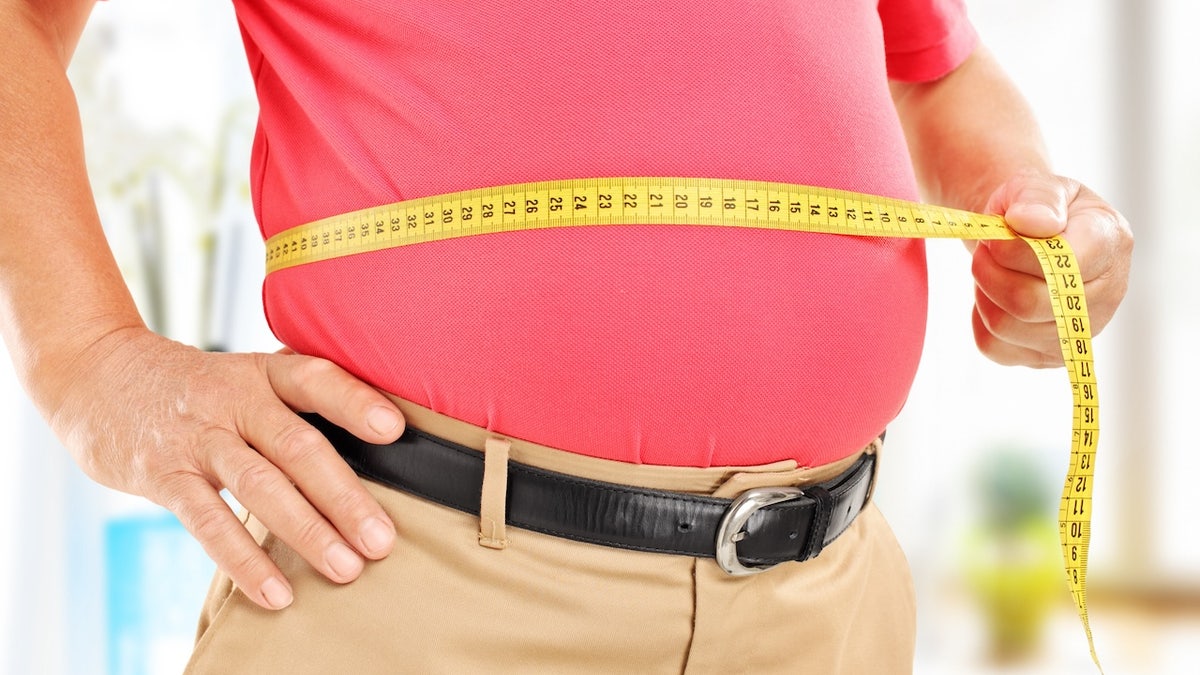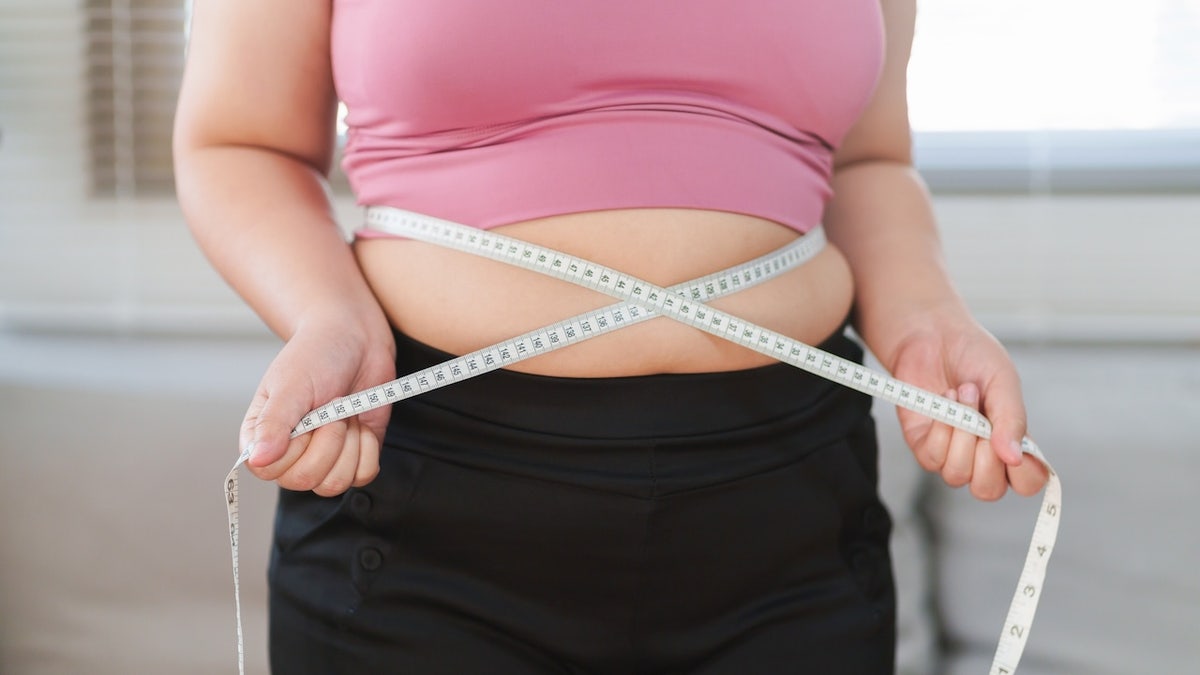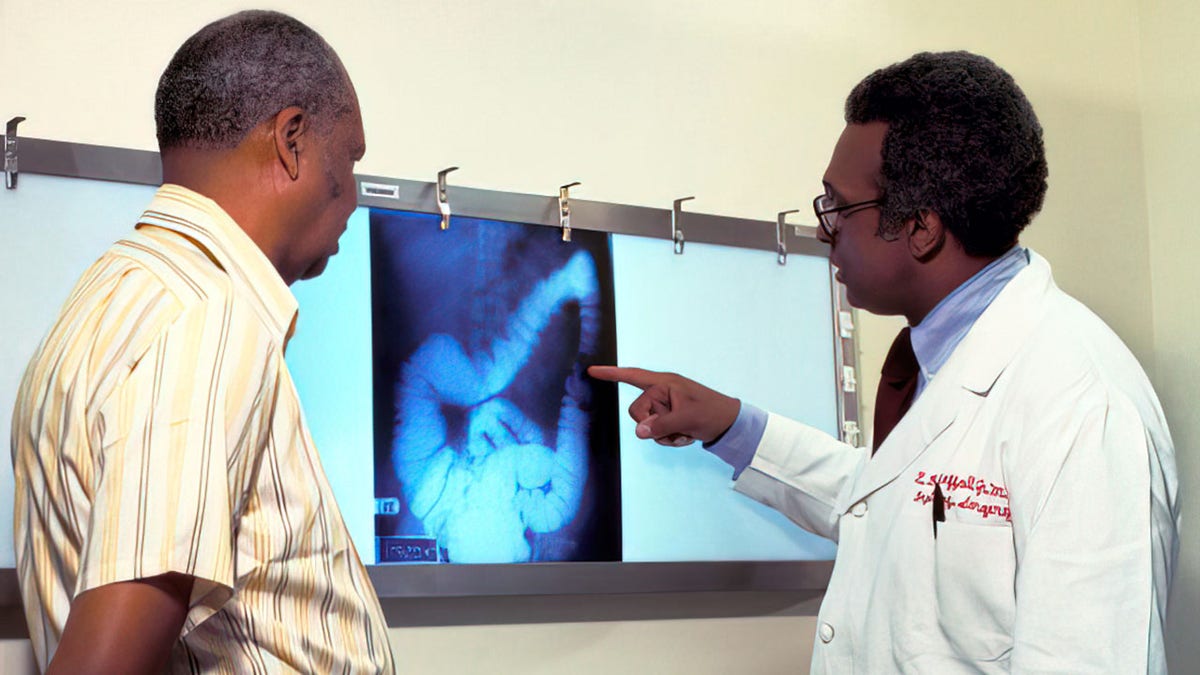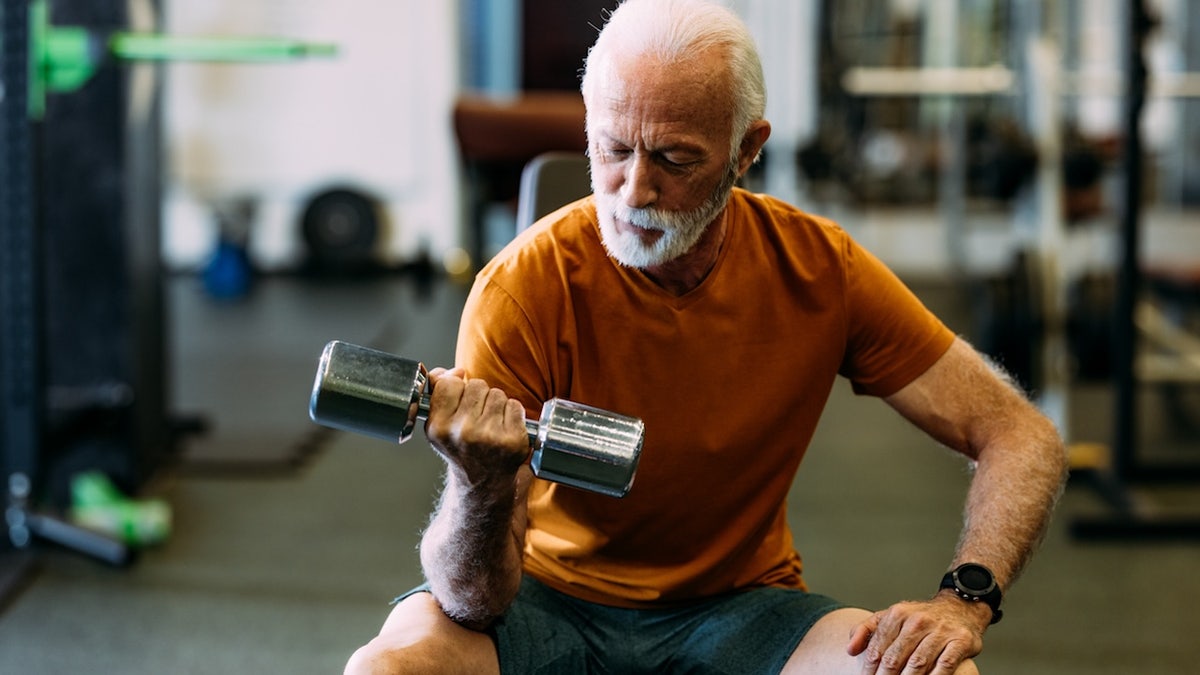Tumors related to the most likely obesity for men with specific measurement of body fat

Obesity has long been established as a Risk factor for cancerin particular when it is stored in some areas of the body.
Now, new research suggests that a larger circumference of life is a larger risk factor of the body mass index (BMI) for obesity tumors – But only for men, not for women.
The results, which have been published in the Journal of the National Cancer Institute, will be presented in May at the European Congress for obesity in Malaga, Spain.
The IMC has a wrong way to measure obesity, the researchers say
The study was conducted by Dr. Ming Sun, Dr. Josef Fritz and Dr. Tanja Stocks of Lund University in Sweden.

New research suggests that a wider circumference of life is a greater risk factor than the body mass index for tumors related to obesity, but only for men, not for women. (Istock)
The researchers analyzed the data of 340,000 Swedish people on average 51 years of which BMI and assessments of the circumference of life were performed between 1981 and 2019, according to a press release.
They therefore compared those statistics a cancer diagnosis extracted from the Swedish cancer register.
For a 14 -year period, there have been 18,185 diagnoses of obesity tumors among the patients in the study.
For menAn increase in the circumference of life of about 11 cm has involved a risk higher than 25% of cancer related to obesity.
This was a larger risk factor than an IMC increase, which increased the possibilities of 19%.

For men, an increase in the circumference of life of about 11 cm has led to a risk higher than 25% of cancer related to obesity. (Istock)
For women, an increase of about 12 cm in circumference of life and an IMC increase were both linked to a risk of cancer greater than 13%, found the study.
Tumors related to obesity include esophagus (adenocarcinoma), gastric (cardia) tumors, colon, rectumHepatic/intrahepatic bile ducts, gallbladder, pancreas, breast (postmenopause), endometrium, ovary, renal cell carcinoma, meningioma, thyroid and multiple myeloma, the release has stated.
“The IMC is a measure of the size of the body, but does not provide information on the distribution of fats, while the circumference of life is a proxy more closely related to the abdominal building.”
Overall, the researchers found that the circumference of life was a more accurate cancer predictor than IMC.
“The IMC is a measure of the size of the body, but does not provide information on the distribution of fats, while the circumference of life is a proxy more closely correlated to the abdominal building,” they wrote.
“This distinction is crucial because visceral fat, which accumulates around the abdominal organs, is more metabolically active and has been implicated in part negative Health resultsincluding insulin resistance, inflammation and abnormal fat levels in the blood. Consequently, individuals with similar BMI can have distinct cancer risks due to the differences in the distribution of fats “.
Why the difference between men and women?
A potential reason for gender discrepancy, according to researchers, is that men are more likely to store fat viscerally (in the belly), while women generally accumulate more subcutaneous fats (under the skin) and peripheral fat (in the arms and legs).
The risk of Alzheimer and Parkinson’s is higher for people with body fat in two specific areas
“Consequently, the circumference of life is a more accurate measure of visceral fat in men than in women”, the researchers wrote.
“This can make the circumference of life a stronger risk of cancer risk in men and explain why the circumference of life adds risk information as well as those transmitted by IMC in men, but not to women”.

The researchers suggested that the combination of the hip circumference with the circumference of life in women could give a more accurate estimate of visceral fat. (Istock)
The excess of body fat is also linked to higher insulin levels in men than in womenThey observed the researchers, who could be a factor in the circumference of life more strongly linked to the risk of men’s cancer.
“The divergence in the way in which the circumference of life and the IMC refer to the risk of cancer between men and women underlines the complexity of the impact of the building (excess of body fat) on the development of cancer”, wrote the researchers.
Click here to get the Fox News App
“It suggests that considering the biological and physiological differences between the sexes could be useful when evaluating the risk of cancer. Further searches It is necessary to explore these sexual differences “.
They also suggested that the combination of the circumference of the hip with the circumference of life in women could give a more accurate estimate of visceral fat.

“The circumference of life is a more accurate measure of visceral fat in men than in women,” the researchers wrote. (Istock)
Dr. Marc Siegel, clinical professor of Medicine at the Nyu Langone Health and Fox News Senior Medical Analyst, was not involved in the study, but has strengthened that the IMC is a “good indicator of obesity, but it is not the only one”.
“Belly fat contains many inflammatory chemicals that act as carcinogenic agents.”
“Obesity leads to inflammation and inflammation is related to many types of cancer, including breast and prostate and tumors of the Gastrointestinal tract“He told Fox News Digital.
“It is not surprising that the circumference of life in men could be a more precise indicator if measured correctly, because the fat of the belly contains many of the inflammatory chemicals that act as carcinogenic”, observed the doctor.

Tumors related to obesity include esophagus (adenocarcinoma), gastric (cariaci) tumors, colon, rectic, liver biles, cystifellea, pancreas, myeloma (postmenopausal), endometrium, ovary, renal cell, meningooma, thyeloma and myeloma. (American Cancer Society/Getty Images)
For women, where the distribution of fats is somehow different, Siegel agrees on the fact that “it makes sense” to consider both the circumference of life and the hip, as the Swedish study suggests.
“The study examines over 300,000 people and is an important new reference, but it is observational, so it shows an association, but not a test,” added the doctor.
Click here to subscribe to our health newsletter
Dr. Brett Osborn, a neurosurgeon of Florida and expert in longevity, has also detailed the different ways in which men and women store fat.
“While women accumulate more subcutaneous fats – on the hips, on the thighs and on the buttocks – men packed him around life, Deep of the abdomen, “Osborn, who was not involved in the study, told Fox News Digital.
“This is visceral fat, and is metabolically toxic. It is not only sitting there. It is active, like a gland, secreting inflammatory chemicals (cytokines), breeding insulin levelsinterrupting hormones and laying the foundations for the growth of cancer cells “.

The training of the force three times a week is ideal, he recommended a doctor, adding: “Resistance training reduces fat and visceral inflammation”. (Istock)
Osborn reiterated that the IMC is limited in its ability to carefully measure excess fat.
“First of all, the IMC does not take into account the muscle mass, therefore a short individual and pressed with a low percentage of body fat can be classified as overweight or obese, when in reality the opposite is true,” he said.
“Secondly, BMI does not tell you where body fat is and, apparently, this is what is critical – at least in men.”
Minimize risk
To reduce the risk of cancer, Osborn recommends that men measure life to make sure they are in a healthy range. People can also keep track of their visceral fat score on a medical level anthropometry scale, he said.
“Understand that the stomach fat is not only cosmetic – it is carcinogenic.”
“Whatever more than 40 inches (102 cm) is a red flag,” he told Fox News Digital.
The training of the force three times a week is ideal, the doctor recommended, adding “Resistance training It reduces visceral fat and inflammation. “
For other health articles, visit www.foxnews.com/health
Proper nutrition is also important, he said. “Eat as if your life depended on this, so that he does it. You stop feeding the risk of cancer.”
“Understand that the fatigue of the belly is not only cosmetic – it is carcinogenic,” added Osborn. “You may not hear it now, but the ticking watch. The visceral fat is silent, aggressive and mortal – and it is doing damage even if your BMI is” normal “.




